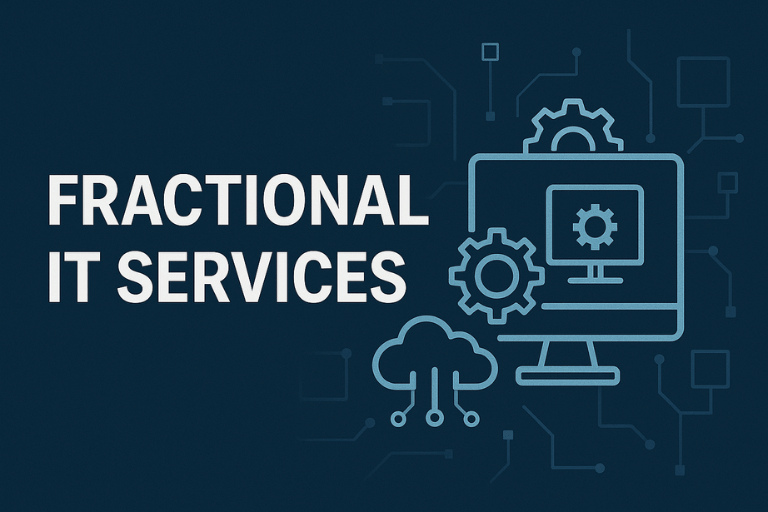On a good day, leaving your space messy or disorganized can cause distractions and make easy tasks really difficult. But on a bad day, it could pose serious safety risks, which brings us to this topic: cable management.
When you walk into your office, the first thing you notice shouldn’t be a tangled mess of cables under or on your desk.
That said, effective cable management goes beyond mere organization; it enhances your workspace’s aesthetics and functionality. By adopting a few simple tools and techniques, you can transform your cluttered office into a model of efficiency and design.
But how exactly do you choose the right tools, and what are the best practices for laying out and maintaining your cables?
Understanding Cable Management
Cable management involves arranging and securing the cables connecting your tech and power sources. This enhances the aesthetics of your office and increases its functionality by preventing accidents and equipment malfunctions.
It’s an eyesore when you’re knee-deep in tangled cords, but that’s not all; you also risk tripping over loose cables or, worse, causing electrical shorts. Proper cable management can prevent these hazards and help extend the life of your cables by reducing strain. Additionally, it can make cleaning a breeze.
Thankfully, various tools are available for tackling unruly wires—cable sleeves, ties, clips, and channels guide and hold cables neatly along desks and walls. These simple solutions can drastically reduce clutter and minimize the risk of tangling.
Assessing Your Current Setup
Before improving cable management, you’ll need to evaluate your current setup to identify what changes are necessary. You can do that by answering the following questions:
- Where are your electronics located? Look under your desk, behind your computer, and around your workspace. Are there tangled wires, loosely hanging cables, or power strips buried under a mess? Take note of these issues.
- What types of cables do you have, and what are their specific functions? You might find power cords, Ethernet cables, USB cables, and others. Identifying each type helps you understand what you’re dealing with and the importance of each in your daily operations.
- What’s the length of your cables? Are they too long, causing excess to bunch up, or too short, pulling tightly on your devices? Both scenarios can lead to damage or disorganization.
- What’s the condition of your cables? Frayed or damaged wires not only look messy but pose safety risks. They need immediate replacement.
- How frequently do you need to plug in and remove cables? If you constantly disconnect and reconnect devices, this will influence how you manage your cables for better accessibility and efficiency. With this thorough evaluation, you’re ready to move forward effectively.
Planning Your Cable Layout
Now that you’ve assessed your current setup, you need a strategic plan for organizing your cables effectively.
First, identify all the devices in your workspace that require power or data cables. Group them based on their location and function. This will give you a clear idea of where cable clusters are necessary and where you can minimize connections.
Next, consider the path your cables will take from the power source to each device. Choose the shortest and most direct routes to prevent tangling and reduce the cable length on the floor. If you’re dealing with many wires, consider segmenting them into manageable bundles. This keeps them organized and makes it easier to access a specific cable when needed.
Map out your plan, possibly with a simple drawing or a digital layout. Include where each device will sit and where the power sources are. This visual guide will serve as a blueprint when you start laying out your cables.
Choosing the Right Tools
To manage your cables effectively, you’ll need the right tools. This involves selecting essential cable organizers that fit your specific setup and choosing quality materials that will stand the test of time and frequent use.
Essential Cable Organizers
Selecting the right cable organizers can transform your workspace from chaotic to streamlined. Based on your specific needs, you need to assess the variety of tools available.
- Cable sleeves bundle multiple wires into a single, neat tube.
- Cable clips are perfect for securing loose wires along desks or walls, ensuring they’re both out of the way and easily accessible.
- Under-desk trays or cable boxes hide power strips and excess cables. These options clean up your space and protect wires from potential damage.
- Velcro ties are for areas needing frequent adjustments—they’re reusable and gentle on your cables.
Choose wisely to maintain both aesthetics and functionality.
Selecting Quality Materials
When selecting materials for your cable management tools, prioritize durability and flexibility to guarantee long-term effectiveness and ease of use. Opt for high-quality plastics or metals that can withstand wear and tear. Stainless steel clamps and nylon zip ties are both effective and resilient choices. They’ll not deteriorate easily over time, even in various environmental conditions.
Additionally, consider the material’s impact on your cables. Soft, flexible materials like silicone or rubber offer excellent grip without damaging the insulation of your wires. Avoid cheaper, rigid plastics that may break under pressure or become brittle with age.
Investing in the right materials ensures the longevity of your cabling system.
Techniques for Hiding Cables
Beyond merely organizing your cables, you can keep your workspace sleek and organized by employing clever techniques to hide those cables effectively. One popular method is using cable sleeves. These flexible tubes bundle your cables together, minimizing clutter and keeping them out of sight. Even better, you can choose a sleeve that matches your room decor to maintain a cohesive look.
Another option is to install under-desk trays or raceways. These devices attach to the underside of your desk or along the edges, providing a hidden pathway for your cables. By routing your wires through these trays, you prevent them from dangling and creating a mess.
If you’re handy with tools, consider creating a false bottom in your desk drawers. This space can conceal power strips and excess cables, leaving only the necessary length visible for your devices.
For cables that must run along the floor, invest in floor cord covers. These come in various colors and materials, allowing them to blend seamlessly with your flooring. They hide cables, protect them from foot traffic, and reduce tripping hazards.
Maintaining Cable Accessibility
Although ensuring cables are organized or hidden properly keeps your office looking neat, it’s also important to maintain easy access to them for adjustments and troubleshooting. You need to guarantee that your setup doesn’t just look good but functions efficiently, too. So, consider using cable management accessories that allow quick access. Velcro straps, for instance, are a great choice. They securely hold your cables together but can be easily undone if you need to swap out a cord or reroute your setup.
You should also look into the placement of your cables. Running them along the edges of desks or through accessible under-desk trays can simplify access without disrupting the aesthetic. Avoid overly tight bundling; this makes it harder to pull a single cable out when needed and can damage the cables over time.
Labeling each cable is another effective strategy. When every cord is marked, you won’t waste time guessing which is which during upgrades or when troubleshooting issues. You can use simple tags or color-coded labels for clarity.
Regular Maintenance Tips
Dust and debris can affect the aesthetics of your workspace and interfere with the functionality of your cables. However, regularly inspecting and cleaning your cables prevent dust buildup and ensures they remain in the best condition. Hence, use a soft brush or a vacuum with a brush attachment to gently remove dust from the cables and their connectors.
It’s also important to check for signs of wear and tear. Look for any fraying, kinks, or bends in the cables that can compromise the efficiency and safety of your setup. If you spot any damage, replace the cable promptly to avoid potential hazards or failures.
Make sure your cables aren’t too tightly bound. Over time, tightly wound cables can strain the wires inside, leading to damage. Use Velcro straps instead of zip ties for a gentler approach that allows for easy adjustments and re-routing as needed.
Lastly, label your cables. This will help you identify them quickly and make future inspections and maintenance easier. You’ll know exactly which cable needs attention and when, streamlining your maintenance routine and keeping your office running smoothly.
Benefits of Organized Cables
One of the many benefits of a proper cable management solution is a marked improvement in safety; well-organized cables mean fewer tripping hazards and a reduced risk of electrical fires. This proactive approach can save you from potential accidents and costly repairs.
Additionally, an orderly workspace can greatly boost your productivity. When you’re not constantly detangling wires or tracking down connections, you can focus better on your tasks. This streamlined environment reduces stress and allows you to work more efficiently.
Aesthetically, tidy cables contribute to a professional atmosphere. Clients and colleagues will get a positive impression when they see a clean and organized office. This visual order can reflect positively on your work ethic and attention to detail.
Moreover, well-managed cables improve equipment performance and prevent overheating by ensuring good ventilation. This can extend the life of your electronic devices, offering you better functionality and delaying the need for replacements.
Conclusion
Mastering cable management isn’t merely about keeping your office tidy; it significantly enhances both the functionality and aesthetic appeal of your workspace. And with the right tools and strategies, you can mitigate potential hazards and significantly boost overall productivity.
Looking to elevate your office environment to the highest professional standards? Network Right is renowned for its comprehensive, professional IT services, ranging from cable management to security access systems and network setup. We offer tailored IT solutions that will optimize and secure your workspace.
Our team is on hand to provide you with strategic insights and local expertise that can transform your office’s infrastructure, fostering a professional atmosphere and peak device performance.
Contact us by filling out the form below. Let’s discuss how our services can make your office safer and more efficient.


